Usually for our Mordant Monday, we dive into a mordant topic, alas we’re in Bali and we have no idea what day it is! For this week’s blog post, we are changing it up as we’re feeling so nourished and inspired by our time in Bali, we needed to share it with you all. We’re drawing on the end of our trip and are gobsmacked by the kindness, patience and extensive knowledge the Threads of Life and their team are so graciously bestowing upon us. Here we share with you the process of learning about Morinda Roots and how they are used to develop a luscious red.

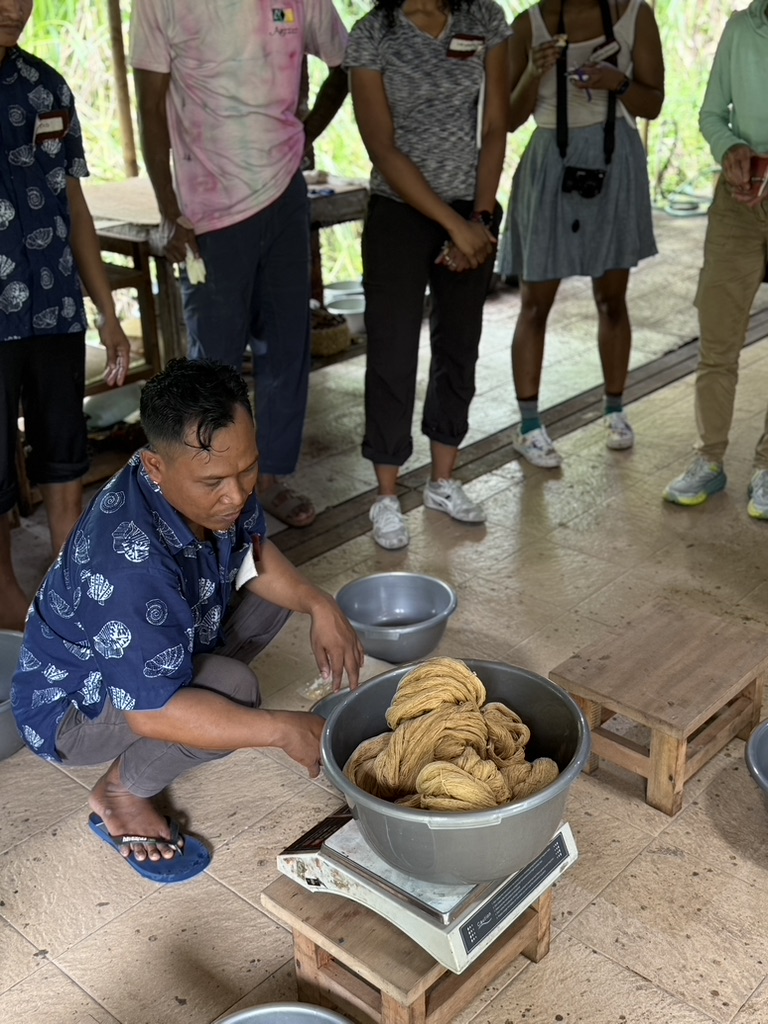
Here Sujata weighs out the yarn that was already mordanted. They use a mordant saponification process to oil the threads to be able to extract out the color. The process can take months before it is time to rub the morinda roots into the mordant to be able to extract the beautiful red color.

Here the TOB team is chopping up the Morinda roots which will then need to be ground in a large mortar and pestle.

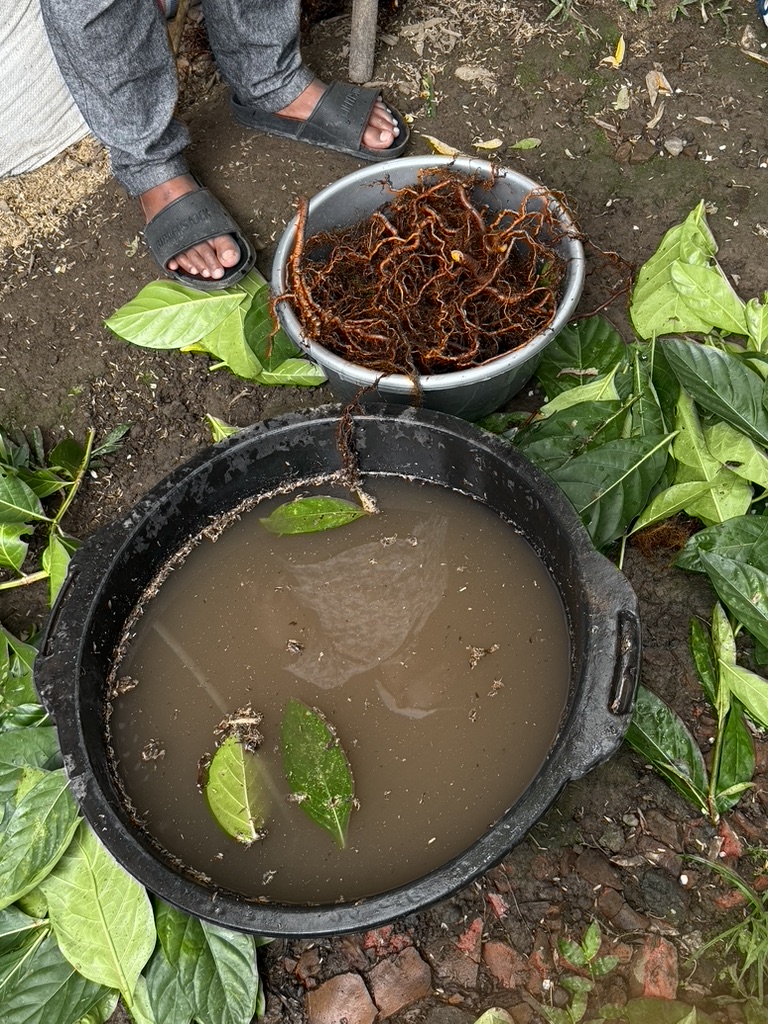
We were also shown how to harvest rinse and wash the roots to be able to process them, and then replant. Pictured on the right. On the left, Deborah is grinding the Morinda.
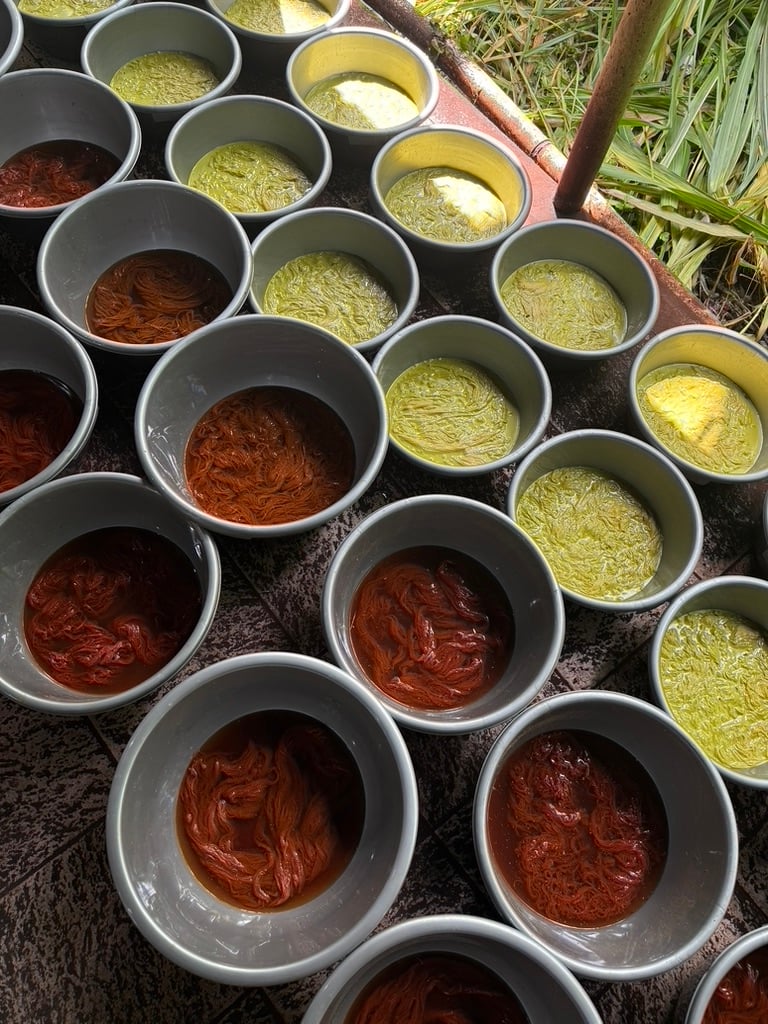
You must turn the yarns in the mordant and Morinda every 12 hours to fully saturate them. The green bowls are filled with yarns being mordanted and the red are the already mordanted yarns in the Morinda roots. Like a cooking show we were given both stages of the process to experiment with.

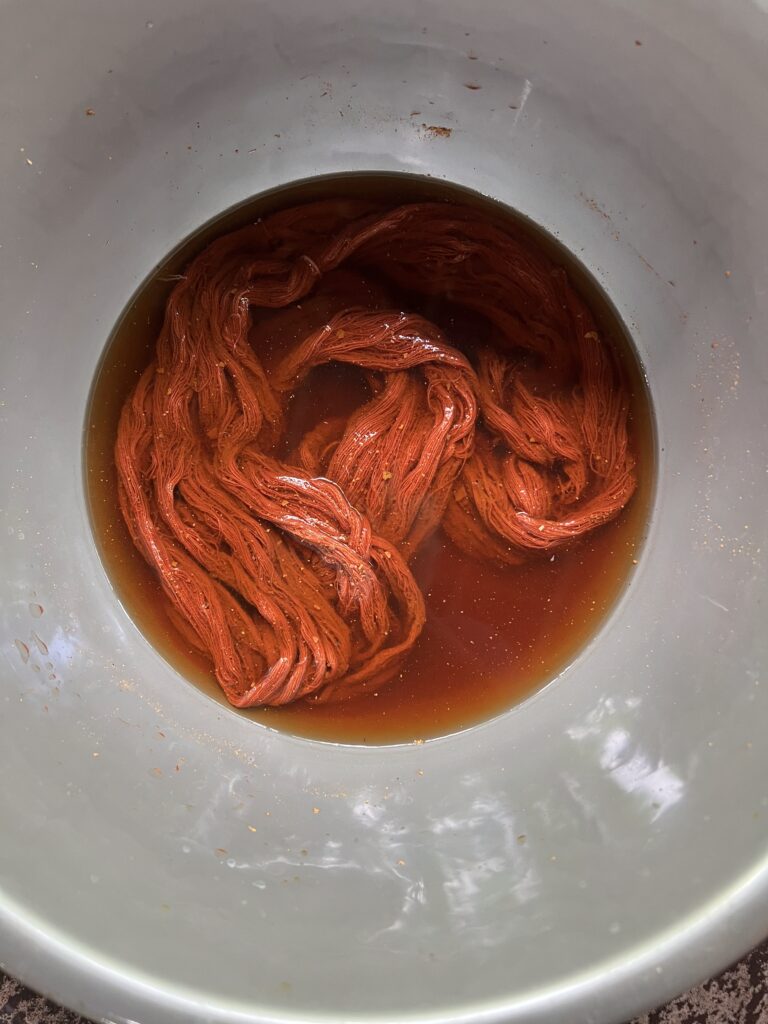
The turmeric is added for ritual purposes along with a clever way of demonstrating when the mordanted yarns are ready to move to the Morinda dye. Once the bright yellow of the Turmeric fades, and looks like the photo below, you can move to dyeing with Morinda.
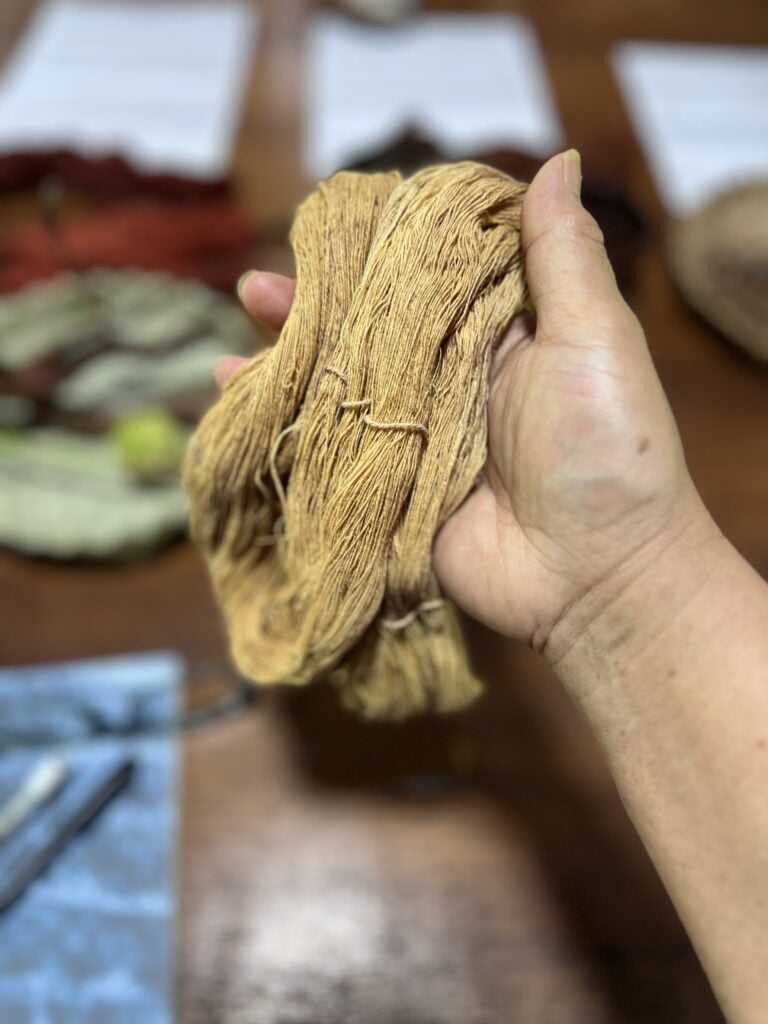
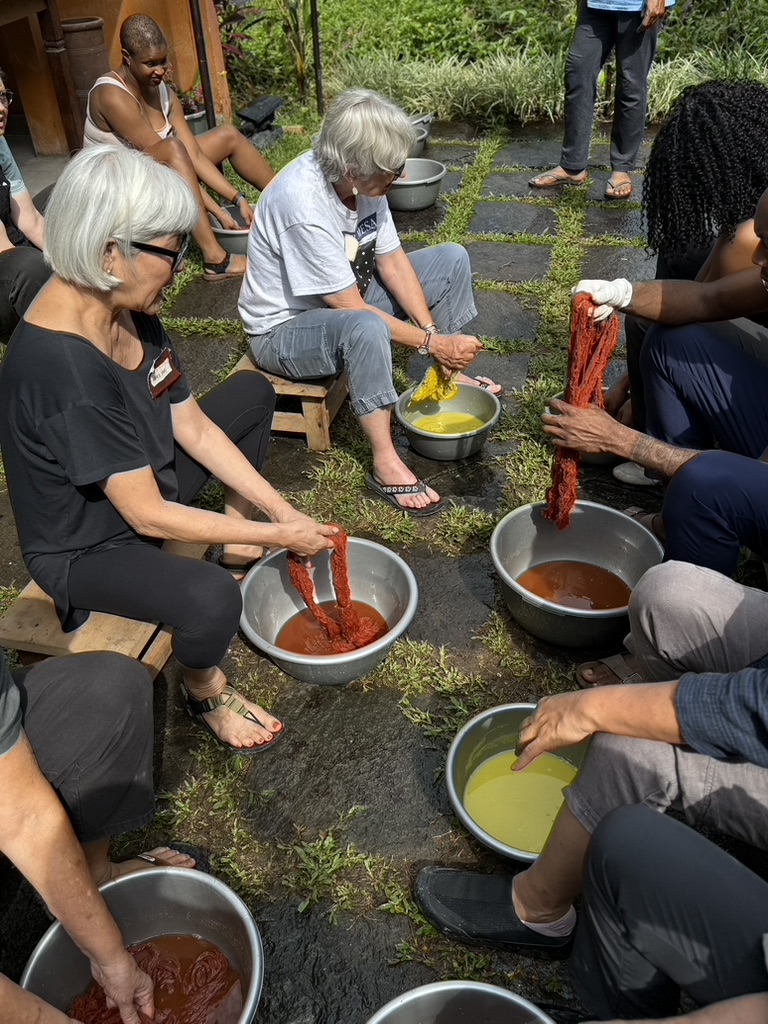

Day 2, we were put to work to make sure there were no empty patches on the skeins. You turn them carefully over and over separating them while rotating in the dye to be able to take up the color more evenly. They are hanging on the right to dry.
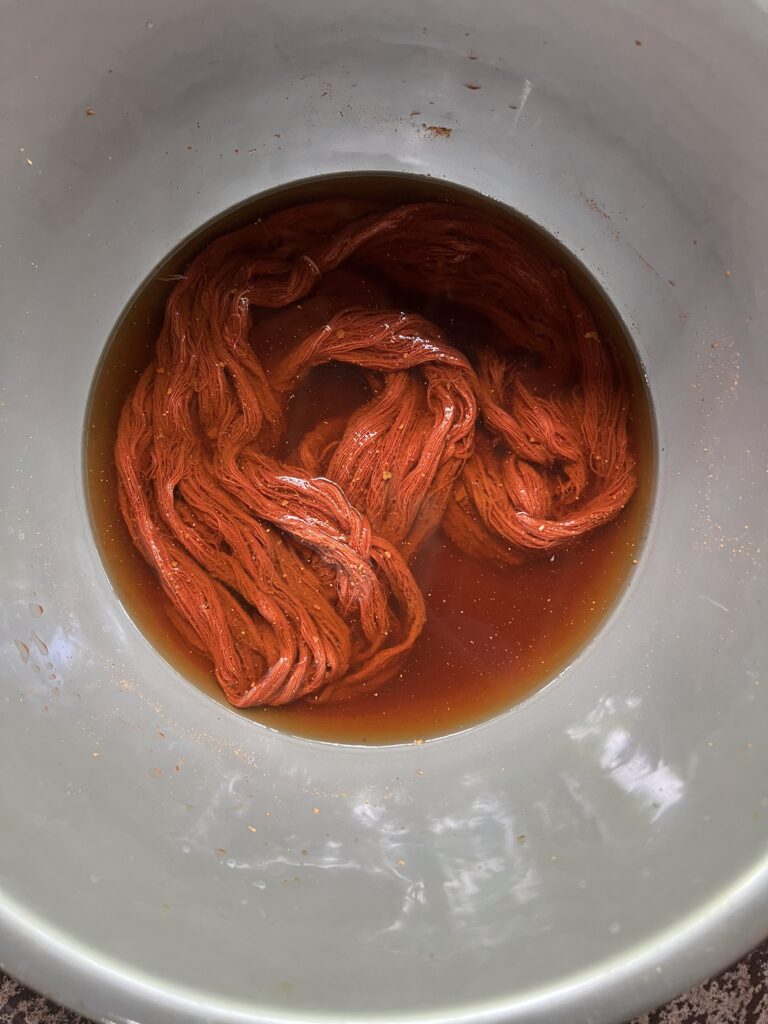
The almost final result!
